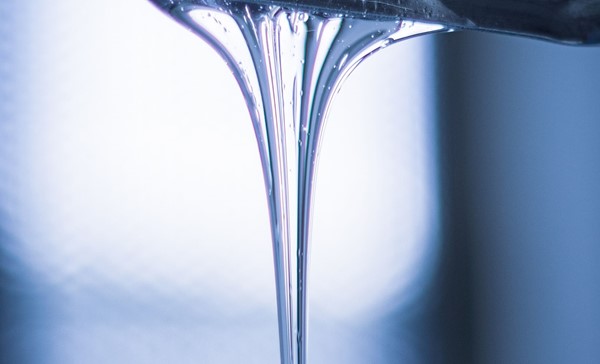In the ever-evolving world of manufacturing, liquid silicone rubber (LSR) injection molding has emerged as a game-changer, offering unparalleled versatility and precision. This innovative process combines the benefits of traditional injection molding with the unique properties of silicone, enabling manufacturers to create intricate and high-performance products across diverse industries.
Understanding Liquid Silicone Rubber Injection Molding
Liquid silicone rubber, also known as LSR, is a highly flexible and durable material that has gained widespread popularity due to its exceptional physical and chemical properties. Unlike traditional thermoplastics, LSR is a thermoset material, meaning it cures and solidifies through a chemical process rather than cooling from a molten state.
The LSR injection molding process begins with the preparation of the liquid silicone compound, which is a combination of silicone polymer and a curing agent. This liquid mixture is then injected under high pressure into a heated mold cavity, where it cures and takes the desired shape.
Benefits of LSR Injection Molding
Precision and Detail
LSR injection molding allows for the creation of highly intricate and detailed parts with exceptional dimensional accuracy and repeatability. This is particularly advantageous for applications that require tight tolerances and complex geometries.
Material Properties
Silicone rubber is renowned for its outstanding physical and chemical properties, including high thermal stability, excellent electrical insulation, and superior resistance to moisture, chemicals, and extreme temperatures.
Design Flexibility
The low viscosity of liquid silicone rubber enables it to flow easily into intricate mold cavities, facilitating the production of complex shapes and undercuts that would be challenging or impossible to achieve with traditional injection molding processes.
Coloring and Transparency
LSR can be easily colored or formulated to be transparent, expanding the aesthetic possibilities and enabling the creation of visually appealing products.
Biocompatibility: Many liquid silicone rubber formulations are biocompatible, making them ideal for medical and healthcare applications, such as implantable devices, prosthetics, and surgical instruments.
Applications of LSR Injection Molding
The versatility of LSR injection molding has led to its widespread adoption across various industries:
Automotive
LSR components are used in automotive applications such as seals, gaskets, and vibration dampers due to their excellent resistance to extreme temperatures and environmental conditions.
Medical and Healthcare
The biocompatibility of liquid silicone rubber (LSR) makes it the preferred choice for medical devices, such as implants, catheters, and surgical instruments.
Consumer Products
LSR is widely used in the production of consumer goods, such as kitchen utensils, baby products, and personal care items, owing to its hygienic properties and ease of coloring.
Electronics
Liquid Silicone Rubber (LSR) stands out as an exceptional material in the electronics industry due to its superior electrical insulation properties. This unique characteristic makes it an ideal choice for a wide array of applications within the sector. Manufacturers frequently use LSR in making cable jackets, where its insulating capabilities play a crucial role in ensuring the safety and efficiency of electrical and data transmission. Additionally, manufacturers employ it in keypad production, where its durability and resistance to environmental factors such as temperature variations and moisture ensure its reliability for long-term use.
Moreover, protective covers made from LSR offer unmatched protection for delicate electronic components against dust, water, and mechanical shock, thereby significantly extending their operational life. The versatility and robustness of LSR make it a preferred material for designers and engineers looking to enhance the durability and performance of electronic products. Its resilience in the face of extreme conditions ensures that it maintains its integrity, providing an added layer of reliability to devices frequently subjected to harsh environments. This durability is crucial for the optimal performance and longevity of these devices, safeguarding them against potential damage and degradation that could compromise their functionality. Consequently, the adoption of LSR in the electronics industry not only improves product performance but also contributes to the advancement of innovative and more resilient electronic devices.
Aerospace and Military
The high-temperature resistance and durability of LSR make it an ideal material for aerospace and military applications, including seals, gaskets, and shock-absorbing components.
Best Practices for Successful LSR Injection Molding
To achieve optimal results with LSR injection molding, it is essential to follow industry best practices:
Mold Design
Proper mold design is crucial for successful lsr injection molding. Factors such as gate locations, venting, and cooling channels should be carefully considered to ensure uniform flow and curing of the material.
Material Selection
Selecting the appropriate LSR formulation is critical, as different formulations offer varying properties and curing characteristics.Working closely with material suppliers can ensure the selection of the right material for the specific application.
Process Control
To ensure the production of consistent and high-quality parts, it is essential to maintain precise control over process parameters, including temperature, pressure, and curing time. By implementing robust quality control measures and monitoring systems, manufacturers can safeguard process stability. This proactive approach not only enhances the reliability of the manufacturing process but also significantly reduces the likelihood of defects, ensuring that each part meets the required standards.ty.
Post-Processing
Depending on the application, LSR parts may require additional post-processing steps, such as deflashing, trimming, or surface finishing. Employ appropriate techniques and equipment to ensure the desired part quality and appearance.
Collaboration with Experts
Due to the specialized nature of LSR injection molding, it is often beneficial to collaborate with experienced suppliers, molders, and consultants who can provide valuable guidance and expertise throughout the entire process. Engaging with professionals who have a deep understanding of the intricacies of LSR (Liquid Silicone Rubber) can significantly enhance the quality, efficiency, and success of your projects. These experts can assist in optimizing the design for manufacturability, selecting the right materials, and solving complex engineering challenges, ensuring that the final product meets or exceeds expectations. Their invaluable insights can also help in reducing costs, improving cycle times, and achieving superior performance and durability of the molded parts.
Conclusion
Liquid silicone rubber injection molding offers a unique combination of design flexibility, material properties, and precision, making it an attractive choice for a wide range of applications. By understanding the process, its benefits, and best practices, manufacturers can leverage this powerful technology to create innovative and high-performance products that meet the demanding requirements of their respective industries.





